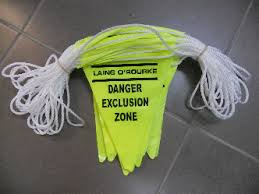Ensuring safety on constructions sites is of supreme
importance regardless of the nature of construction. Though the workers possess
proper knowledge, attire, and equipment to keep them safe but are it sufficient? Without
proper marking and zoning of danger zones, anyone can easily come at a risk. This is where the role of safety flagging
comes into play. Using safety flags at construction sites is an ideal way to
inform, warn or catch the passerby’s attention of an area to curb any possible
mishap.
Bunting flags are not only used for festive decorations but
it plays diverse functions and one such role is marking boundaries of hazardous
areas. Safety bunting flags are great safety tools which warn people that a
particular area is under construction and can be dangerous if ignored or not
taken care of when crossing. These flags are essential for safety compliance
needs in worksites or wherever safety is an issue, especially in construction
sites. Safety flags come in many options such as hand flags, flags on rope and
more. The hand flags are held by workers to guide visitors which areas to avoid
while the flags on the rope are used to mark the dangerous areas to prevent
unauthorized access.
Safety flags are available in various color options to
ensure that they are easily visible and noticed from long distances. Popular
color choices include orange which signifies construction is under process and
one needs to be careful; red is used to indicate the most obvious danger sign;
yellow signals that people need to go slow when crossing a marked area. White
is not frequently used but also indicates danger; last but not the least, green
is used to indicate sewer line and drain work is in the process.
If you require high-quality safety flags do not hesitate to
get in contact with a leading Australian bunting manufacturer that can offer
safety bunting options along with a full customisation facility to imprint your
own cautionary messages or signs.
